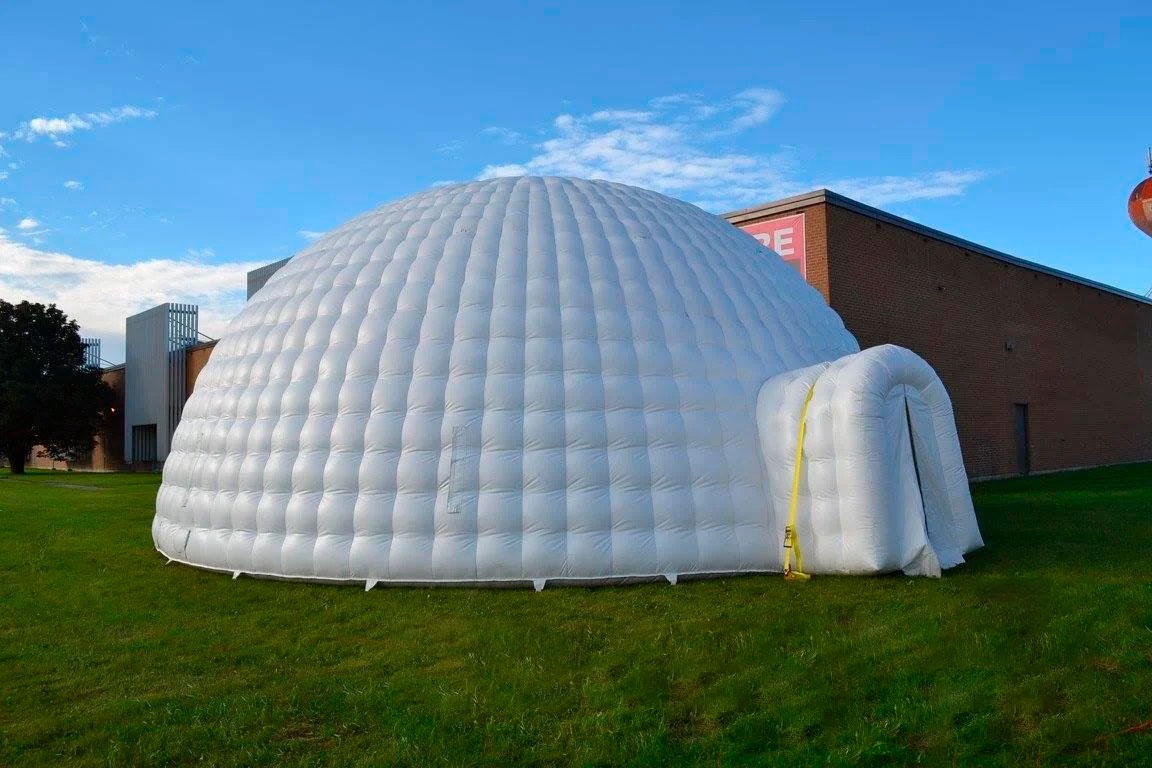In recent years, inflatable domes have become increasingly popular for hosting events of all kinds, from weddings and parties to sports events and trade shows. These versatile structures offer a unique and visually appealing setting that can be customized to suit various themes and purposes. However, as with any temporary structure, safety should be a top priority when using inflatable domes for events. In this article, we will explore the safety measures that event organizers and operators should consider to ensure the well-being of attendees and the successful execution of events within these inflatable marvels.
Understanding Inflatable Dome Structures
Before delving into safety measures, it's essential to have a basic understanding of inflatable dome structures. Inflatable domes are made from durable materials, typically PVC or nylon, and are supported by a continuous flow of air from blowers or fans. The air pressure inside the dome keeps it inflated and stable. The structure's flexibility and strength make it suitable for a wide range of events and environments.
Inspection and Maintenance
One of the most critical safety measures for inflatable domes is regular inspection and maintenance. These structures are not intended for permanent use and require proper care to ensure their structural integrity. Here are some key points to consider:
-
Pre-Event Inspection: Before each event, conduct a thorough inspection of the dome and all associated components, such as blowers, tie-downs, and stakes. Check for any signs of wear and tear, including punctures, tears, or loose seams.
-
Proactive Repairs: Address any identified issues immediately. It's essential to have repair kits and spare parts on hand to fix minor damages promptly.
-
Scheduled Maintenance: Implement a routine maintenance schedule, which may include cleaning, inflation system checks, and seam inspections. Follow the manufacturer's guidelines for maintenance.
-
Weather Considerations: Be particularly vigilant if the event is outdoors. High winds, heavy rain, and extreme temperatures can impact the dome's stability. Have a weather contingency plan in place.
Secure Anchoring and Weight Distribution
Proper anchoring is crucial to ensure that inflatable domes remain stable and secure during events. Here's what to keep in mind:
-
Anchoring Systems: Use appropriate anchoring systems such as stakes, sandbags, or water barrels, depending on the surface and conditions. Ensure that the anchoring points are well-distributed to prevent tilting or shifting.
-
Wind Ratings: Be aware of the dome's wind rating and follow the manufacturer's recommendations for anchoring in windy conditions. Extra precautions may be necessary for high-wind areas.
-
Weight Distribution: Pay attention to the even distribution of weight inside the dome. Large crowds, equipment, and decorations should not create uneven stress on the structure.
Emergency Exit Plans
Safety considerations should also extend to emergency situations. Event organizers should have clear plans in place for evacuating attendees in case of an emergency:
-
Clearly Marked Exits: Ensure that all emergency exits are clearly marked and easily accessible. The number of exits should be proportionate to the size of the dome and the expected attendance.
-
Staff Training: Train event staff on evacuation procedures, including how to guide attendees safely out of the dome in an orderly manner.
-
Communication: Establish a communication system to relay emergency information to attendees and staff if needed.
Fire Safety
While the materials used in inflatable domes are typically fire-resistant, it's essential to have fire safety measures in place:
-
No Open Flames: Prohibit the use of open flames, candles, or fireworks inside the dome.
-
Fire Extinguishers: Have fire extinguishers strategically placed inside the dome, and ensure that event staff are trained to use them.
-
Emergency Response Plan: Develop a fire emergency response plan that includes evacuation procedures and contact information for local fire authorities.
Crowd Management
Managing the flow and behavior of event attendees is critical for safety within inflatable domes:
-
Capacity Limits: Determine and enforce capacity limits to prevent overcrowding, which can put stress on the structure.
-
Security Personnel: Consider having security personnel or ushers to help manage crowds and respond to any security issues promptly.
-
Traffic Flow: Design the layout of the event to promote smooth traffic flow within the dome, preventing bottlenecks and congestion.
Electrical Safety
Many events held in inflatable domes require electrical equipment and lighting. To ensure electrical safety:
-
Use GFCI Outlets: Use ground fault circuit interrupter (GFCI) outlets to reduce the risk of electrical shock.
-
Secure Cords and Wiring: Keep electrical cords and wiring away from walkways and areas where they can be tripped over. Use cable covers to protect cords if necessary.
-
Qualified Electricians: If major electrical installations are required, hire qualified electricians to set up and inspect the electrical systems.
Conclusion
In conclusion, the use of inflatable architecture materials has ushered in a new era of versatility and creativity in event planning and temporary structures. While inflatable domes offer remarkable opportunities for unique and visually captivating events, safety measures cannot be overlooked. Regular inspections, robust anchoring, and adherence to safety protocols are essential to ensure the well-being of attendees. Furthermore, the fire safety, crowd management, and electrical precautions discussed here are vital elements of a comprehensive safety strategy. By prioritizing safety alongside innovation, inflatable architecture materials continue to transform the way we design and experience events, pushing the boundaries of what's possible in temporary architecture.


No comments yet